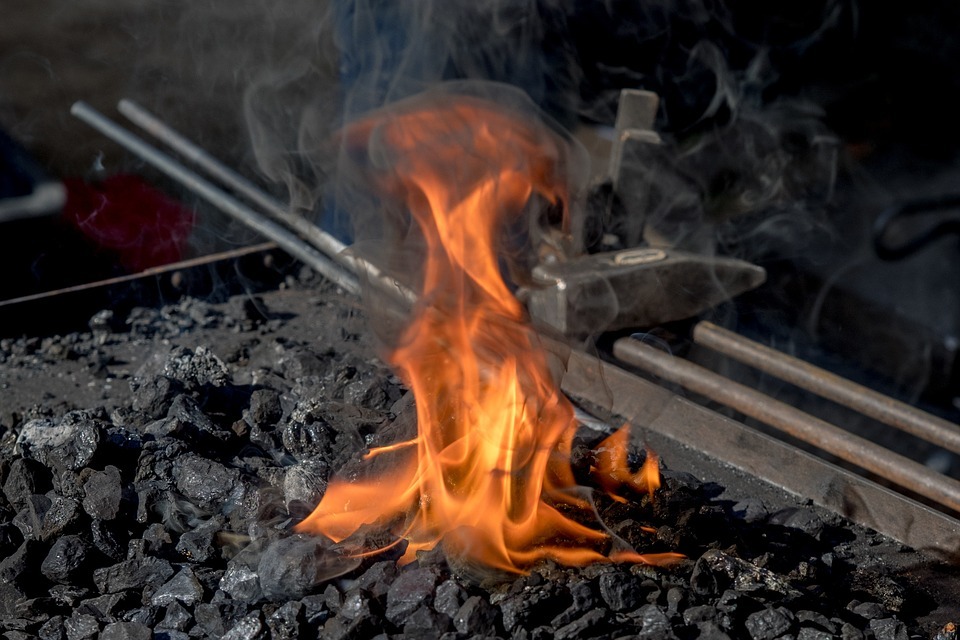Cold and hot forging play an important role in several manufacturing processes. If you are confused about which process is right for your manufacturing plant, this article is for you.
Forging is a manufacturing method that shapes solid-phase metal workpieces by applying a compressive force to them. Forging can be classified as either hot or cold according to the temperature the metal piece is worked on.
We have discussed important details about cold and hot forging that you don’t want to miss.
Take a look.
Cold Forging: The Details
Cold forging is done at room temperature. The workpiece is compressed between two dies until its form is achieved. This technique involves rolling, drawing, pressing the workpiece, spinning it, extruding it, and heading to produce a ready-to-fit metal piece.
One of the most widely used manufacturing techniques in the production and assembly of automotive components is cold forging extrusion. In addition to being widely employed in the production of components for automobiles, cold forging extrusion is often put to use in the manufacturing of custom machined parts.
The Merits
Cold forging comes with the below benefits:
- Manufacturers prefer cold forging over hot forging. This is because cold-forged parts are not as difficult to finish.
- All bars are annealed prior to being forged. This eliminates the need for additional heat treatment.
- Another important advantage is the material savings that can be achieved by using near-net shapes.
- The final weight of the cold-forged part is equal to the initial weight of the workpiece.
- Parts made from cold-forged steel have excellent surface quality and dimensional accuracy.
- Many manufacturers usually decide that cold forging is the best choice because of its economic benefits and high production rates.
The Demerits
- Some of the cold-forging characteristics can prove to be disadvantageous depending on the requirements of the manufacturer. For example, it is only possible to shape simple shapes in large volumes.
- Stamping has more options for shaping and deformation than cold forging. If the customer is looking for a customized component, cold forging may not be an option.
- Cold-forged metals are also less ductile and, therefore, not suitable for certain configurations.
- Residual stress can also occur due to the grain structure, which gives the material its strength.
- Cold forging extrusion requires heat treatment to remove cracks, creeks hartening, and rafters. So, cold forging is not recommended for all steel grades, especially those sensitive to strain hardening or have low ductility.
- For instance, Cold forging is not recommended for low-alloy steels with a greater than 0,05% carbon content.
Hot Forging: The Details
Hot forging is performed at very high temperatures (upto 1150 degrees Celsius for steel, 360-520 degrees Celsius for aluminum alloys, and 700-800 degrees Celsius for copper alloys).
This temperature is required to prevent the metal from forming during strain hardening. Stamping, which involves pressing the material between a tool surface and a die surface in hot forging, is the most common hot forging manufacturing process.
The Merits
- Hot forging is characterized by high temperatures that allow maximum material deformation and easy access to complex 3D geometry.
- The ductility of hot-forged components is higher, making them suitable for several configurations.
- Hot forging can also be used to create customized parts. Because of the excellent surface quality, forgers can do various finishing works such as painting, coating, or polishing to meet their specific requirements.
- The availability of hot forging materials around the world has an impact on their final prices.
The Demerits
- Hot forged metals have properties that are achieved by heat treatment. The material is heated to 1000 degrees Celcius, then further heated to 500 degrees Celcius.
- Hot-forged components have a lower-dimensional tolerance than those made from cold-forged parts, another disadvantage.
- You should make sure that the cooling process is done under controlled conditions. Otherwise, you run the risk of warping.
- The grain structure of forged pieces can vary, and there are usually reactions between the atmosphere and the workpiece, so you need to be careful.
Cold vs. Hot Forging: The Bottom Line
Cold forging increases the strength by allowing the metal to harden at room temperature. The hot forging process prevents metals from hardening at high temperatures. This results in high yield strength, low hardness, and high ductility.
A manufacturer may also choose custom forging for economic reasons. The required functions of the component, the industry, and whether there is a high volume or low quantity of custom parts are all factors that influence the decision.

